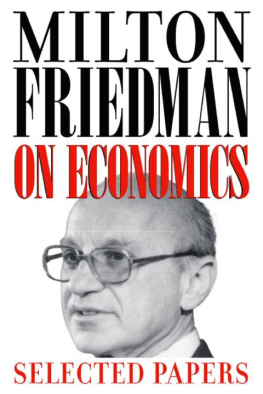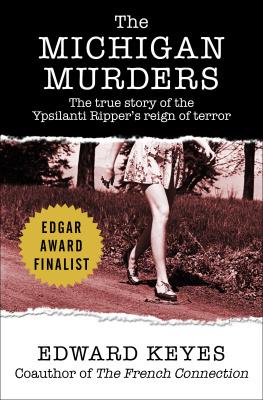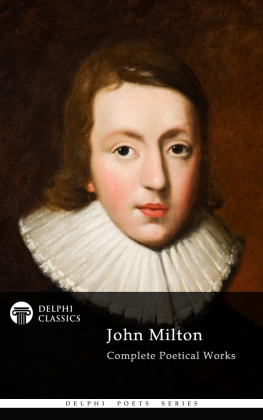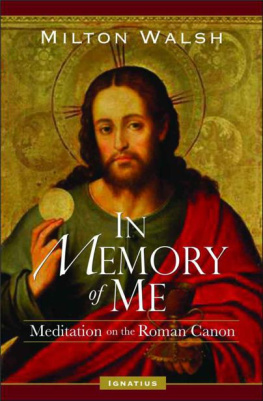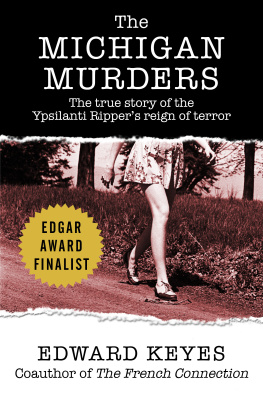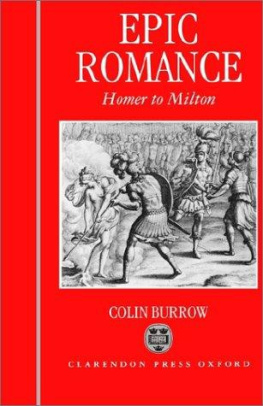Milton Rokeach - The Theee Christs of Ypsilanti
Here you can read online Milton Rokeach - The Theee Christs of Ypsilanti full text of the book (entire story) in english for free. Download pdf and epub, get meaning, cover and reviews about this ebook. year: 0, genre: Science. Description of the work, (preface) as well as reviews are available. Best literature library LitArk.com created for fans of good reading and offers a wide selection of genres:
Romance novel
Science fiction
Adventure
Detective
Science
History
Home and family
Prose
Art
Politics
Computer
Non-fiction
Religion
Business
Children
Humor
Choose a favorite category and find really read worthwhile books. Enjoy immersion in the world of imagination, feel the emotions of the characters or learn something new for yourself, make an fascinating discovery.

- Book:The Theee Christs of Ypsilanti
- Author:
- Genre:
- Year:0
- Rating:4 / 5
- Favourites:Add to favourites
- Your mark:
- 80
- 1
- 2
- 3
- 4
- 5
The Theee Christs of Ypsilanti: summary, description and annotation
We offer to read an annotation, description, summary or preface (depends on what the author of the book "The Theee Christs of Ypsilanti" wrote himself). If you haven't found the necessary information about the book — write in the comments, we will try to find it.
The Theee Christs of Ypsilanti — read online for free the complete book (whole text) full work
Below is the text of the book, divided by pages. System saving the place of the last page read, allows you to conveniently read the book "The Theee Christs of Ypsilanti" online for free, without having to search again every time where you left off. Put a bookmark, and you can go to the page where you finished reading at any time.
Font size:
Interval:
Bookmark:
Some Second Thoughts About the Three Christs:
Twenty Years Later
T WENTY years have elapsed since I said goodbye to the three Christs. Leon Gabor, the youngest of the three, is alive and well but still a patient at Ypsilanti State Hospital; Clyde Benson, the oldest, was discharged into the custody of his family in January, 1970; Joseph Cassel died in August, 1976.
As I reread my account of the three Christs, I must confess that I now almost regret having written and published it when I did because with the passage of all these years I have been able to see, increasingly clearly, that it is flawed by some major omissions. In my eagerness to be objective and scientific and to focus the story on the effects of my experimentally arranged confrontation on the three Christs beliefs and behavior, I was unable to see that it was really a story about a confrontation among four people rather than three. Moreover, I had overlooked the effects of such a confrontation on my as well as their delusional beliefs and behavior. Had I been able to see all this when I originally wrote The Three Christs of Ypsilanti, the ending, the interpretations, and the conclusions would have been somewhat different from the published account. I, therefore, welcome this second chance to provide a fuller account.
A more complete report of the confrontation between myself and the three Christs would surely have begun with an account of a lecture I presented to a large group of clinical psychologists and psychiatrists in Palo Alto a few months after I had terminated the research project. I was explaining to this sophisticated audience how I had managed to bring the three Christs together at Ypsilanti State Hospital: We surveyed 25,000 patients in the mental hospitals of the state of Michigan, found one Christ at Kalamazoo State Hospital, and two more at Ypsilanti State Hospital. I then arranged to have the Kalamazoo Christ transferred to Ypsilanti, and then there were four. Needless to say, the significance of this slip of the tongue was immediately and poignantly apparent to both myself and my audience. But it took me a long time before I was able to appreciate fully what it had revealed about my own unconscious strivings and motivations. I now feel that I may have written the book somewhat prematurely, that I had focused my attention only on the effects of the daily confrontations about self-identity on three rather than all four of the central characters in the drama. And I would now also see the book as ending somewhat differently: while I had failed to cure the three Christs of their delusions, they had succeeded in curing me of mineof my God-like delusion that I could change them by omnipotently and omnisciently arranging and rearranging their daily lives within the framework of a total institution. I had terminated the project some two years after the initial confrontation when I came to realizedimly at the time but increasingly more clearly as the years passedthat I really had no right, even in the name of science, to play God and interfere around-the-clock with their daily lives. Also, I became increasingly uncomfortable about the ethics of such a confrontation. I was cured when I was able to leave them in peace, and it was mainly Leon who somehow persuaded me that I should leave them in peace.
I should mention another reason why I terminated the project when I did. Altogether apart from the question of ethics and my own need to be God-like, there was the question of the effectiveness of a confrontational technique designed to bring about lasting changes in belief systems and behavior. While I surely had learned a great deal about the delusional belief systems of the three Christs and why they behaved as they did, I had increasing doubts that bringing them together for the purpose of challenging and contradicting one anothers beliefs was a good way to bring about lasting changes. To use Leons term, such confrontations were agitational and they may have served, on the contrary, only to arouse their ego defenses and denial mechanisms and thus to freeze rather than change their beliefs and behavior in any fundamental way.
It is therefore no accident that in my later work I renounced the method of confrontation with others as a basic technique for bringing about change in favor of the method of self-confrontation. Readers who may be familiar with the work I have done subsequent to The Three Christs of Ypsilanti (especially The Nature of Human Values, published in 1973 by Free Press) will know that I have reported rather dramatic long-term changes in socially significant values, and in logically related attitudes and behaviors, as a result of making people aware, via the method of self-confrontation, of basic contradictions existing within them. Such long-term changes are typically brought about by a single experimental session and have been observed as long as twenty-one months afterward. Thus, the method of self-confrontation that evolved from the confrontational method I employed with the three Christs is not only generally more effective for bringing about change but, equally important, it does not pose the ethical dilemmas that are inherent in the three Christ research. Thus, if I had been able to do this research all over again, I would surely have used the method of self-confrontation.
But what I learned most from the three Christ study is that goodness and greatness, that is, the striving for morality and competence, are universal human motives. While my slip of the tongue hinted at the existence of a fourth Christ, Bertrand Russells epigram that I quote at the beginning of the book suggests there are really millions and billions of Christs, or at least countless people trying to be God-like: Every man would like to be God, if it were possible; some few find it difficult to admit the impossibility. I found out from my teachers, the three Christs of Ypsilanti, exactly in what sense they were trying to be God-like. They were striving for goodness and greatness, and such strivings, I came to understand, are really the strivings of all human beings. The main difference between the three of them and the rest of us who are also trying to be God-like is that whereas the rest of us can bring ourselves to admit the impossibility of our ever becoming absolute or infinitely moral and competent, the three Christs found it difficult to admit such an impossibility. Nonetheless, I learned that what all of us have in common with the three Christs is that we all strive to maintain and enhance our self-conceptions and self-presentations as competent and moral. This is one of the major ways in which humans who would be Christ or Christ-like are distinctively different from other living beings.
M ILTON R OKEACH
1981
NEW YORK REVIEW BOOKS
CLASSICS
THE THREE CHRISTS OF YPSILANTI
MILTON ROKEACH (19181988) was born in Hrubieszw, Poland, and at the age of seven moved with his family to Brooklyn. He received his BA from Brooklyn College in 1941. In the same year he began in the fledgling social psychology program at the University of California at Berkeley, but his studies were interrupted by a stint in the U.S. Army Air Forces Aviation Psychology Program. He returned to Berkeley in 1946 and received his PhD in 1947. Rokeach became a professor of psychology at Michigan State University and subsequently taught at the University of Western Ontario, Washington State University, and the University of Southern California. His famous psychological study The Three Christs of Ypsilanti (1964) has been made into a screenplay, a stage play, and two operas. His other major books are The Open and Closed Mind (1960), Beliefs, Attitudes, and Values (1968), and The Nature of Human Values
Font size:
Interval:
Bookmark:
Similar books «The Theee Christs of Ypsilanti»
Look at similar books to The Theee Christs of Ypsilanti. We have selected literature similar in name and meaning in the hope of providing readers with more options to find new, interesting, not yet read works.
Discussion, reviews of the book The Theee Christs of Ypsilanti and just readers' own opinions. Leave your comments, write what you think about the work, its meaning or the main characters. Specify what exactly you liked and what you didn't like, and why you think so.

